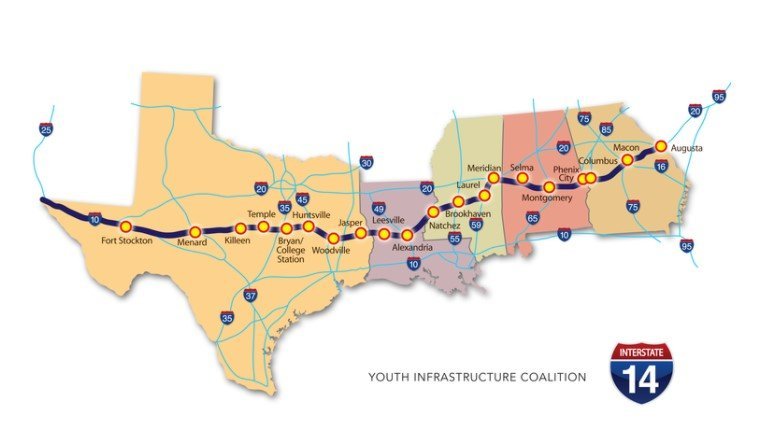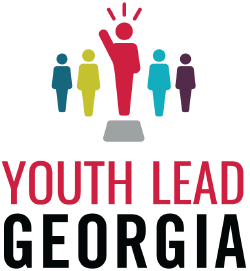A long-discussed interstate project running from the Augusta area to Texas is still part of the infrastructure bill President Biden’s signed on Nov. 15.
Interstate 14, starting in Georgia and stretching across Alabama, Mississippi and Louisiana to its ending in Texas, was added to the bill earlier this year in an amendment co-sponsored by Senators Raphael Warnock (D-GA) and Ted Cruz (R-Texas).
“The amendment does not have any cost associated with it; rather, it is a first step in the process of upgrading this system of roads to add freight capacity and connect strategic military installations across our States,” Cruz said.
Senator Jon Ossoff (D-GA) confirmed during a visit to Augusta on Nov. 23 that I-14 remains in the infrastructure bill.
“It will connect key defense installations across the American South. And it will provide a new major interstate highway connecting southern states,” said Ossoff. “This is a historic investment in transportation, in our public schools, in clean, safe, healthy drinking water, in high-speed internet and more. Interstate 14 is part of that vision.”

MORE: I-14 Will Map a New Route Across Georgia
The Columbus, Ga.-based Youth Infrastructure Coalition, has touted the benefits of I-14. The coalition was founded in 2017 by Frank Lumpkin and two friends, aged 19 at the time.
They created the “My14” video. https://youthinfrastructurecoalition.com/video
[adrotate banner=”51″]
Lumpkin said, “”We raised $15,000 to create that video. I remember the first two weeks were nearly silent. We had like 200 views on YouTube. I thought I had spent all this donor money and we had nothing to show for it. Then Fox News called, and then a call from U.S. News and World Report.”

A 2005 Congressional study first called for two new interstates, I-14 and I-3. Then Ga. senators Saxby Chambliss and Johnny Isakson, both Republicans, offered two amendments to the national highway funding bill. The language was similar to what then Cong. Charlie Norwood, a Republican who represented the Augusta area, had included in the House version of the bill.
An April 2005 news release from Sen. Isakson’s office explained, “The first amendment by Chambliss and Isakson would create a study of proposed new Interstate 14, an east-west highway that would link Augusta, Macon, and Columbus, Georgia, connecting through Montgomery, Alabama and going to Natchez, Mississippi. The second amendment would create a study of proposed new Interstate 3, a north-south highway that would link Savannah and Augusta, Georgia to Knoxville, Tennessee.”
Interstate 3 was met with opposition, as noted in a 2012 feasibility study the Federal Highway Administration sent to Congress.
“Three of the four corridors have significant enough problems to make them infeasible or unreasonable for further study, such as impacts to National Parks, extreme mountainous terrain, or being too far from the cities specified by Congress.”
The genesis of a plan to build roads to better connect Georgia tier two cities, like Augusta and Columbus, long precedes the 2005 Congressional study. In the mid-1980s, then Ga. Gov. Joe Frank Harris introduced his Governor’s Road Improvement Project, known as GRIP.
Frank Lumpkin said, “GRIP was extremely important in making I-14 a possibility. The Fall Line Freeway that runs from Columbus to Augusta will likely be the road that I-14 follows. If we didn’t have that four-lane, divided highway and all the land already acquired this project would be monumental. It’s still going to be a huge undertaking, however, since we already have all of that land it’s just about upgrading the road and bringing it to interstate standards.”
Although construction may be years in the future, Lumpkin said the coalition has resolutions of support for I-14 from every municipality along the proposed route.
Dana Lynn McIntyre is a Staff Reporter with The Augusta Press. You can reach her at dana@theaugustapress.com.











